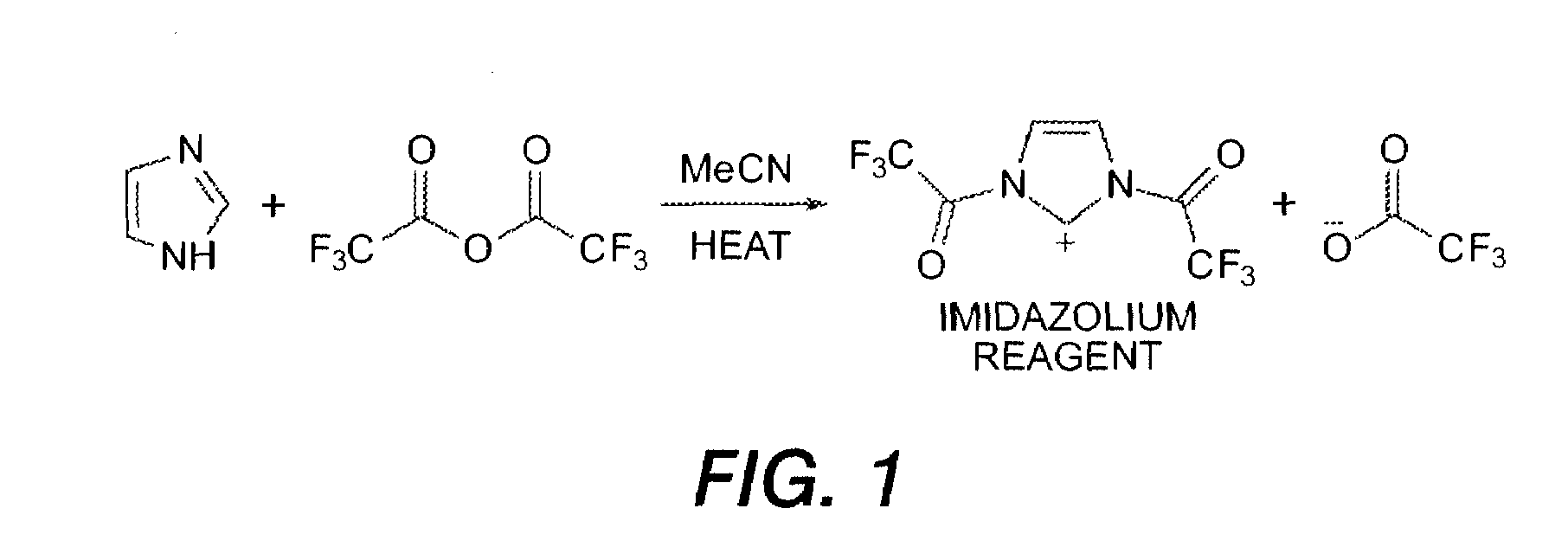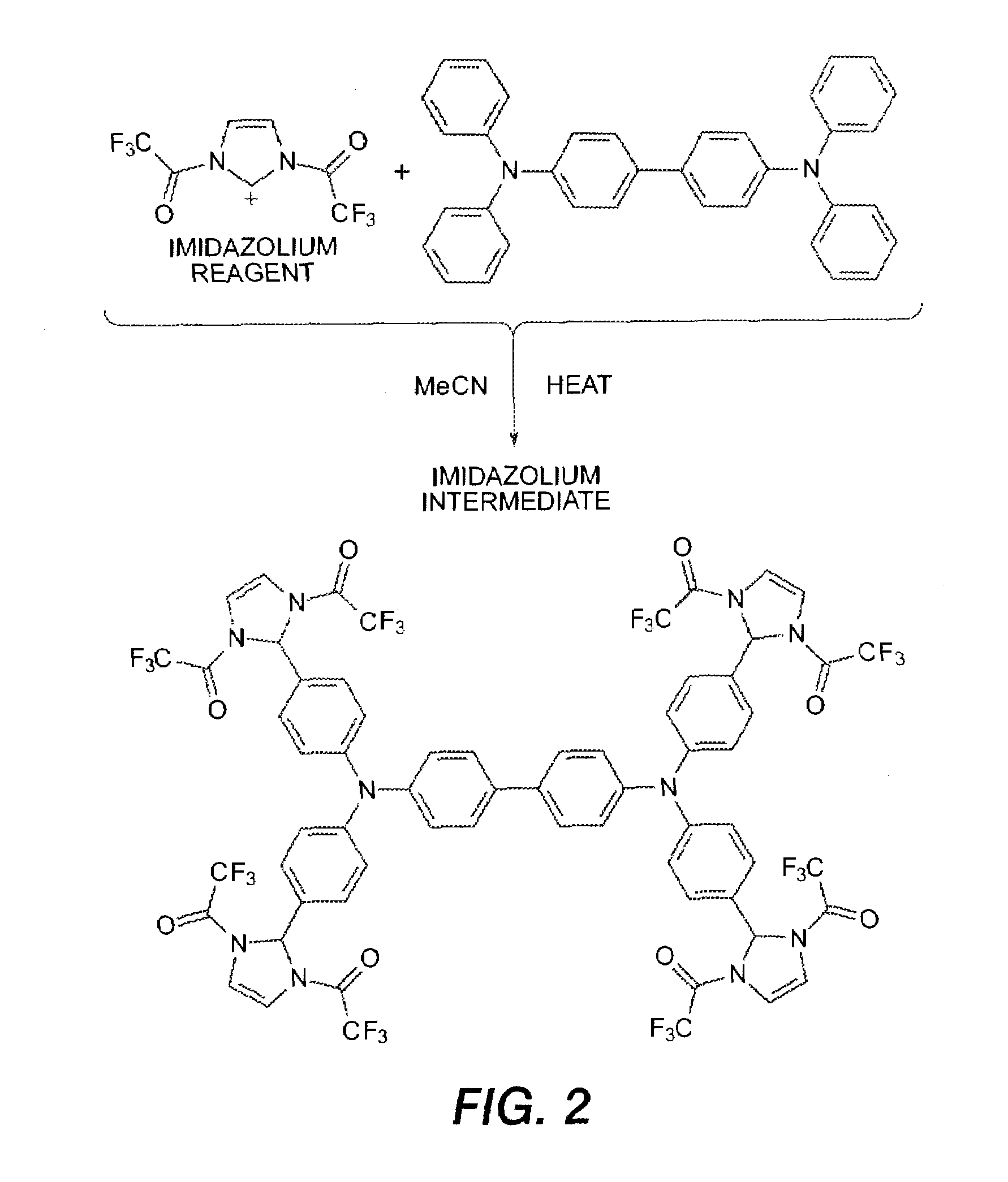Electrophilic aromatic substitution with diacyl imidazolium
- Summary
- Abstract
- Description
- Claims
- Application Information
AI Technical Summary
Benefits of technology
Problems solved by technology
Method used
Image
Examples
example 1
[0089]A 5 L round bottom flask equipped with magnetic stirring was flame-dried and cooled under argon. Acetonitrile (1.5 L) and trifluoroacetic anhydride (358 mL, 2.58 mol) were combined. A solution of imidazole (84 g, 1.23 mol) in acetonitrile (500 mL) was added drop-wise over approximately 40 min and the mixture was heated to reflux and monitored by HPLC. Once all of the imidazole was consumed (2.5 h) tetraphenylbiphenyldiamine (TBD) (100 g, 0.20 mol) was added and the resulting yellow suspension was stirred at reflux for 16 h. HPLC showed no unreacted TBD remained. The reaction was poured into 2.5 L of ice / water and stirred for 1 h. A yellow precipitate was isolated by filtration (yield: 450 g—wet weight before drying).
example 2
[0090]The imidazolium bistrifluoroacetate may be generated in situ in the presence of the tetraaryldiamine, obviating the step of pre-forming the reagent. To a two neck 2 L round bottom flask was added TBD (50 g, 0.102 mol), imidazole (34.9 g, 0.501 mol), followed by 900 mL of acetonitIle. The reaction was magnetically stirred and flask outfitted with a reflux condenser and purged with nitrogen. Trifluoroacetic anhydride (138 mL, 0.99 mol) was added over the course of 5 min. After addition of trifluoroacetic anhydride the reaction was set to reflux for 16 hours. HPLC showed no unreacted TBD remained. Reaction was poured into 3 L rapidly stirred water to evolve a yellow powder. This was filtered off and the filter cake washed with water until filtrate was clear and colorless. Obtained 170 g (wet weight before drying).
Example 3
[0091]The wet polyimidazoline product from imidazoline addition step (450 g—wet mass-assume 313 g, 100% yield from previous reaction) was dissolved in 1500 mL T...
example 3
[0094]Alternatively, hydrolysis of imidazoline product can be conducted as follows. To a three necked round bottom flask was placed wet polyimidazoline product (170 g), THF (1275 mL) followed by 2.5 M HCl (660 mL). The resulting solution was magnetically stirred, flask outfitted with reflux condenser, and stoppers, and the reaction set to reflux for 16 h. HPLC analysis of the reaction demonstrated that all imidazoline was consumed. Reaction was stopped and left to cool to room temperature. Upon cooling the tetraformylated product precipitates from the reaction mixture, which was filtered off and washed with water, and then toluene to yield 55 g of the pure product.
PUM
| Property | Measurement | Unit |
|---|---|---|
| Temperature | aaaaa | aaaaa |
| Structure | aaaaa | aaaaa |
| Electrophilic | aaaaa | aaaaa |
Abstract
Description
Claims
Application Information
 Login to View More
Login to View More - R&D
- Intellectual Property
- Life Sciences
- Materials
- Tech Scout
- Unparalleled Data Quality
- Higher Quality Content
- 60% Fewer Hallucinations
Browse by: Latest US Patents, China's latest patents, Technical Efficacy Thesaurus, Application Domain, Technology Topic, Popular Technical Reports.
© 2025 PatSnap. All rights reserved.Legal|Privacy policy|Modern Slavery Act Transparency Statement|Sitemap|About US| Contact US: help@patsnap.com



